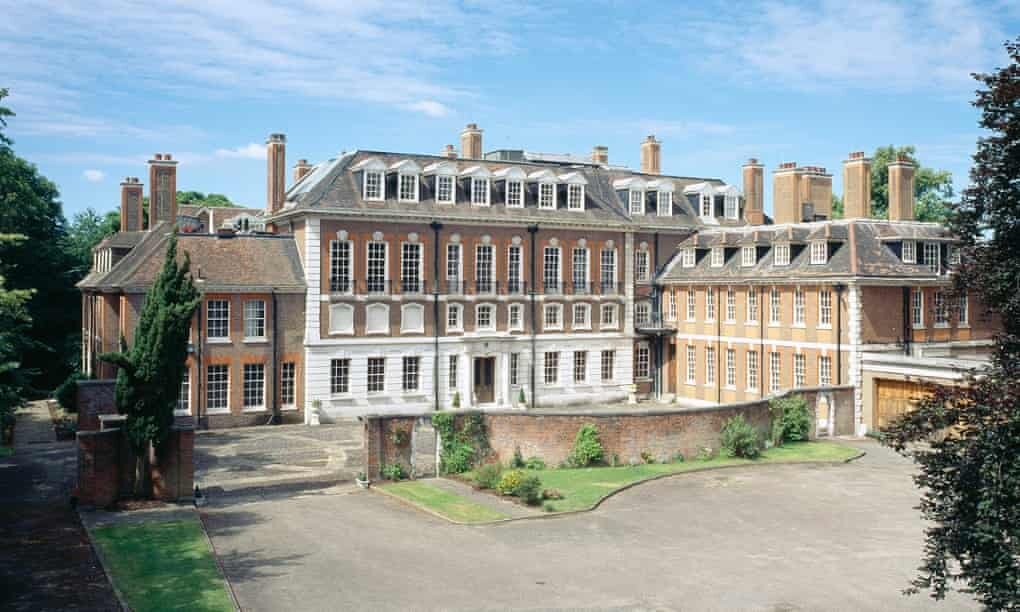The Circus Train - Witanhurst Mansion
Continuing my journey of how I wrote my debut novel ‘The Circus Train’, today I’m giving readers a glimpse into a house I reference in the book — Witanhurst Mansion.
Witanhurst Mansion in Highgate, London. This image is from The Guardian
A brief history of Witanhurst Mansion:
Witanhurst Mansion is a Grade II historical home located in Highgate, London. From what I could find online, the current home was designed from 1913 to 1920 in the Georgian Style of architecture for English soap magnate Sir Arthur Crosfield. Crosfield inherited a soap and candle company from his parents and subsequently sold it. He then bought an estate originally called Parkfield, which would eventually become Witanhurst. Sadly, Crosfield lost a lot of money in a Greek mining deal gone bad in the mid-1930’s. Then he died really tragically after falling out of a window of a sleeper car in a train in France. (Macabre, right?)
Just how big is Witanhurst?
It’s difficult to verify the accuracy of the house specs, but this is what’s circulating online. Sprawling 11 acres, the home is 88,000 sq. ft of pure luxury. For the longest time, it was one of the largest homes in London, second only to Buckingham Palace. I think there might be a new home in Mayfair now that has taken that title, but Witanhurst is still one of the biggest properties in the UK capital.
Witanhurst is thought to have 65 rooms (25 of these are bedrooms) spread out over three floors. These include a Drawing Room, Study, Chinese Room, Billiard Room and a Gallery hallway. According to Wikipedia, it also has a 70ft ballroom that boasts oak flooring, walnut panels and cornices with gold leaf.
This is all heresay though — there isn’t actually a citation on Wikipedia, where I found a lot of this info, and the house appeared to be in disarray according to a New Yorker reporter who visited the home in 2008. As I wrote above, it’s tough to know fact from fiction. For example, an online search leads me to believe there is now a 70ft swimming pool in the house. Whether this replaced the ballroom, I’m not sure. It also looks like the current owners have created an entire subterranean world in a huge basement, but again, I’m not sure.
Witanhurst Mansion and The Circus Train:
When I was researching my novel, I knew I wanted to put in a really opulent home somewhere in London. After stumbling across Witanhurst, I knew I had to include it.
In my novel, aspiring circus impresario Horace Beddington III moves to London with the assistance of his grandmother, Esther. I imagined Esther moving in aristocratic circles in Boston and New York, where the family is from, speaking in her Mid-Atlantic accent and summering on Long Island. It wouldn’t be a stretch for her to have extremely wealthy friends in London. So when Horace moves abroad, he takes up residence in a home in Highgate that isn’t far from Witanhurst.
There’s a scene in the novel early on where Horace throws a party for potential investors in The World of Wonders, the luxurious circus he wants to create. This party takes place at Witanhurst and the fictional hosts, though never mentioned, are the Crosfields. In reality, the Crosfield family hosted many parties at Witanhurst, attracting celebrities and royalty.
On a personal note, Witanhurst and Highgate hold special meaning for me. My Mum attended the Channing School for Girls, which is in Highgate. Witanhurst is a 10 minute walk from Channing, just over Highgate Cemetery.
Who owns Witanhurst now?
The Crosfield family sold Witanhurst in 1970, but it was repossessed by the banks. Things get a little murky after that, with the ownership changing from a Kuwaiti family to a company registered in Panama rumoured to be connected to a Syrian family. Eventually it was sold to a British property developer who renovated it and put it up for sale with Knight Frank. Apparently it was purchased by the family of Russian billionaire Andrey Guryev through a shell company in the British Virgin Islands, although I don’t think anyone knew his identity at the time of sale.
A flurry of articles surfaced in 2015 about ownership and the state of the house. One of these is the New Yorker piece by British writer Ed Caesar I referenced above. He talked about touring it with an estate agent in 2008, commenting on its demise. At the time, no one had lived in it since the 1970s, the glamour and glittering parties all but a thing of the past. Another piece I found is from that bastion of journalistic delight, The Daily Mail. There’s tons more, in all the usual places — Forbes, Variety etc, all saying variations of the same thing.
But again, I’m not certain about any of this. It’s now 2021 and the home that played a part in launching the career of a fictional circus owner still appears to be owned by the Guryev family. In a fantasy dream world, I imagine the home being designated a heritage space. I would rent it out and throw a lavish party, reminiscent of the one I write about in my book for my UK launch.
Hey, a gal can dream, right?
